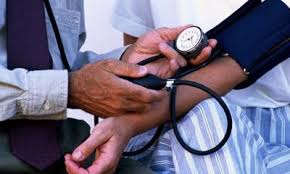Source: phillytrib.com
There are a lot of myths about high blood pressure (hypertension). The truth is that one of every three adults in the US has high blood pressure. 70% of people that had a heart attack had high blood pressure. 80% of people that had their first stroke had high blood pressure. 70% of people that had chronic heart failure had high blood pressure. The prevalence of hypertension in the African American population is between 25-30%. Hypertension kills a disproportionate number of African Americans unnecessarily each year.
What is blood pressure? Blood is carried from the heart to all parts of your body though your arteries. Your blood pressure is the force of the blood pushing against the walls of the arteries. Each time your heart beats, which is about 60-70 times a minute at rest, it pumps out blood into your arteries. Your blood pressure is at its highest when your heart beats, pumping the blood. This is called systolic pressure. When your heart is at rest, between beats, your blood pressure falls. This is the diastolic pressure. Your blood pressure is always given in two numbers, the systolic and diastolic pressures. Both are equally important. Usually they are written one above or before the other, such as 120/80 mmHg. The top number is your systolic and the bottom your diastolic.
A big myth is that automated devices are more precise than manual blood pressure kits. The automated devices found in some doctor’s offices are just a convenience. The automated device can be off by several points. To get an accurate blood pressure reading the patient should have rested in a seated position for at least five minutes and their arm should be resting on a table or held by the person giving the test. Both types of monitors can give a reading that is off just because you’re in the doctor’s office. If the reading is high they should take it again later during the visit.
Taking your blood pressure once a year is enough. If you’ve been diagnosed with high blood pressure you should have a 24-hour ambulatory blood pressure (ABPM) reading at least once or twice a year. An ABPM reading takes a reading every 15 to 60 minutes over 24-hour period. This type of monitoring will help to determine if your medication is working to control your blood pressure.
Can you take you blood pressure anytime? Your blood pressure normally drops 10% to 20% during sleep. 29% of people with high blood pressure known as “nondippers” don’t get this nighttime dip. A “nondipper’s” blood pressure is high all the time. If a 24-hour blood pressure test shows your blood pressure never dips your doctor may advise you to take your medication at night around 9 p.m. This has been shown to reduce your risk of cardiovascular events by 61%. A cardiovascular event can include a heart attack.
Once my blood pressure is under control you should still visit your doctor? If your blood pressure is under control, it’s recommended you need to visit your doctor at least twice a year. If your blood pressure isn’t well controlled, you more than likely will want to see your doctor more frequently.
Does sodium have a limited affect on your blood pressure? Heavy use of salt will contribute to hypertension. Salt is sometimes hidden in processed foods under another name. The names of most salts will begin with either sodium, monosodium or disodium followed by another chemical. When using reduced or low sodium foods read the label. Some foods labeled low or reduced sodium may contain just as much or more sodium as their counterpart. The body only requires 200 mg of sodium (1/10 teaspoon of salt) daily to function properly. The typical American diet ranges between 6,000 and 20,000 mg daily. Sodium intake should range between 500-1,500 mg daily. Excessive amounts of sodium in the diet increase water retention, which in turn increases blood pressure. It has been shown that increases in potassium help to regulate hypertension however, increasing potassium intake will do very little if your sodium intake is high.
Exercise is the key to reducing hypertension? Exercise can make a difference in blood pressure but some precautions should be taken before you start a program. Your physician may recommend an exercise stress test, which should be administered by a professional.
Recent studies show a significant decrease in blood pressure after 6-8 weeks of aerobic exercise conditioning. They also show a return to high blood pressure 3-6 weeks after detraining. This indicates that exercise must be maintained along with other forms of therapy to continue making a difference in blood pressure levels.
Exercises you should avoid include sprint training or stop and go sports such as karate, racquetball, heavy weight training and powerlifting. You may be able to resume some of these once your blood pressure is under control but only after you get an OK from your physician. For toning you can weight train but the amount of resistance used should be moderate (not heavy) so that you can do between 10 and 12 repetitions comfortably. Aerobic exercises, which primarily work the cardiovascular system, (heart, lungs, circulation) should also be done at moderate intensity. These exercises include walking, cycling, jogging, swimming, aerobic dance and rowing. Because a sudden increase in blood pressure can be induced by exercise it is important to warm up very slowly and increase the amount of time you exercise gradually. Breathe normally and cool down slowly at the end of your exercise routine so that your blood pressure will stabilize gradually.
Last, know your condition. Educate yourself.
For more information contact your local American Heart Association.
Before starting your fitness program, consult your physician.
